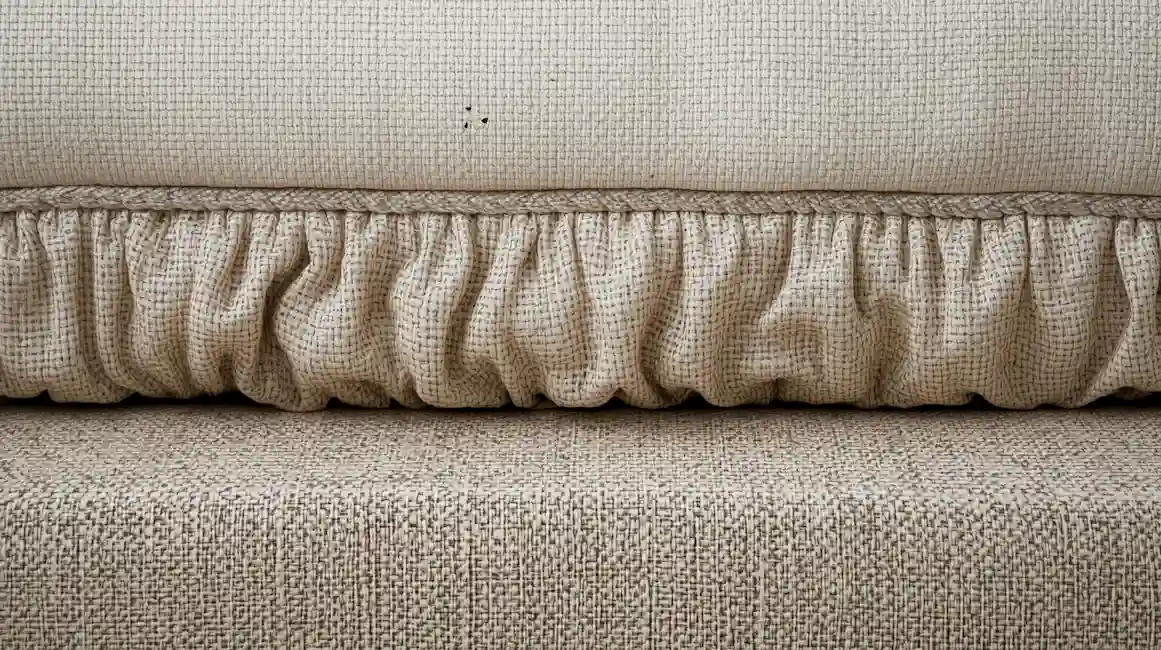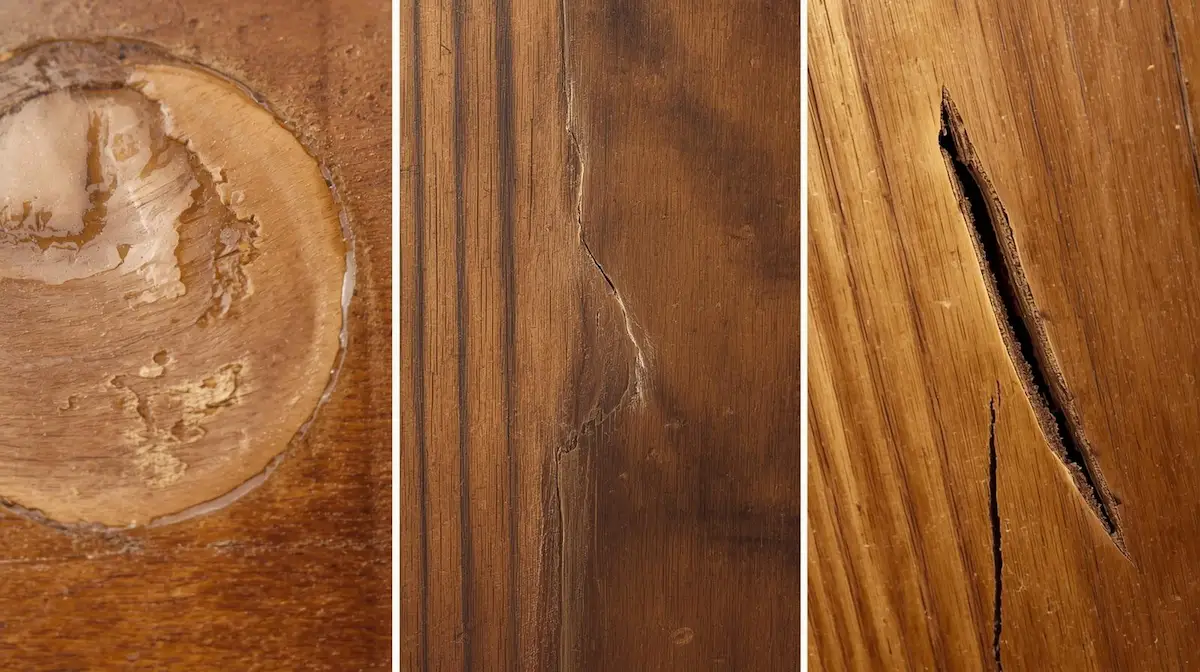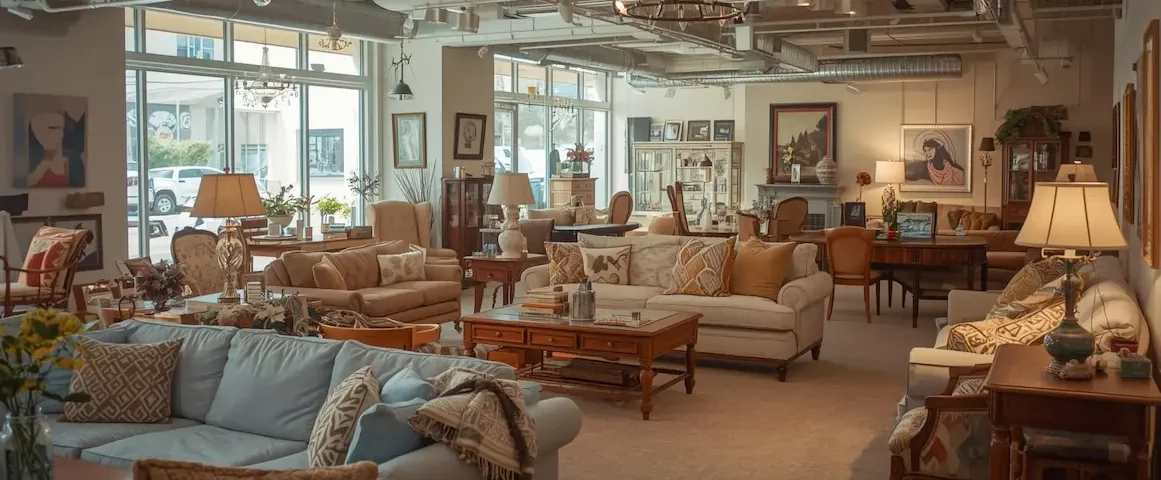
The Ultimate Guide to Second-Hand Furniture in Manchester Find Affordable & Sustainable Gems
November 19, 2025
What is a Close-Coupled Toilet? Your Complete Guide to Benefits, Types & Buying Tips
November 21, 2025Finding furniture that balances style, affordability, and sustainability can often feel like an impossible mission. You wander through big-box stores, only to be met with steep prices and cookie-cutter designs, or you hesitate at buying second-hand, worrying about hidden damage, unknown histories, or even pests. It’s easy to feel frustrated, restricted by budget, or guilty about contributing to the cycle of disposable decor.
But imagine furnishing your home with unique, high-quality pieces that tell a story, save money, and support the planet, without the usual headaches. The world of pre-loved furniture is full of hidden treasures, often richer in character and craftsmanship than brand-new items. The trick is knowing where to look, what to look for, and how to navigate the process wisely and safely.
This guide is your go-to roadmap for confidently exploring the local used furniture market. We’ll provide expert tips, practical checklists, and actionable strategies to help you spot hidden gems, inspect them like a pro, negotiate smart deals, and bring your finds home without a hitch. Get ready to elevate your space with sustainable style and smart savings.
The Allure of Pre-Loved: Why Buying Used Furniture Makes Sense
Opting for pre-owned furniture is more than a practical choice; it’s smart for your wallet, your home’s aesthetic, and the environment. Here’s why investing in pre-loved pieces can be a game-changer.
Cost Savings & Budget-Friendly Decorating
- Significant Reductions: Used furniture often comes at a fraction of the price of new items, letting you snag high-quality pieces without the hefty price tag.
- Smart Budget Allocation: With careful selection, you can furnish entire rooms, or even your whole home, while staying within budget.
- Investment Pieces: Quality, durable items are abundant in the second-hand market. Many older pieces maintain their value over time, making them wise long-term choices.
Unique Style & Character: Beyond the Big Box Stores
- One-of-a-Kind Finds: Pre-loved furniture carries history and personality that mass-produced pieces simply can’t match.
- Mixing Styles: Vintage or antique pieces can blend seamlessly with modern décor, adding depth and individuality to your space.
- Craftsmanship & Quality: Older furniture often showcases superior construction, with attention to detail that’s increasingly rare today.
Environmental Impact: A Sustainable Choice
- Reducing Landfill Waste: Giving furniture a second life keeps usable items out of landfills, cutting down on unnecessary waste.
- Lowering Carbon Footprint: Choosing pre-owned reduces the demand for new manufacturing, conserving energy and resources.
- Circular Economy: Every second-hand purchase supports a more sustainable consumption model, promoting long-term environmental responsibility.
The Thrill of the Hunt & Finding Hidden Gems
- Excitement of Discovery: There’s a unique satisfaction in uncovering a piece that feels made just for your home.
- Unexpected Treasures: From antique side tables to retro chairs, the second-hand market is full of surprising, inspiring finds.
Your Local Treasure Map: Where to Find Used Furniture Near You
The world of pre-loved furniture is diverse, and knowing where to start your search can make all the difference. From curated consignment shops to bustling online marketplaces, each source offers unique advantages and challenges. Here’s a comprehensive guide to help you navigate your local options.
Understanding Your Options: A Comparative Guide
When evaluating used furniture sources, consider quality control, typical condition, price point, sustainability impact, and overall convenience. Below is a snapshot of common local options:
|
Source Type |
Typical Price Range |
Best For |
Pros |
Cons |
Sustainability Impact |
|
Consignment Shops (e.g., local vintage stores, The Green Chair Project) |
Mid-Range to High |
Shoppers seeking curated, high-quality, and unique pieces |
Higher quality items, professionally cleaned and inspected. Unique, curated selection. Opportunity to negotiate. |
Higher prices than thrift stores. Limited inventory and turnover. Finding specific items can be challenging. |
High – items are often restored or upcycled, reducing waste |
|
Thrift Stores (e.g., Goodwill, Salvation Army) |
Low to Mid-Range |
Budget-conscious shoppers, DIY enthusiasts, or those seeking functional items |
Affordable prices. High inventory turnover. Supports charitable causes. Great for DIY projects. |
Quality can be inconsistent; it may need cleaning or repairs. Limited negotiation and return policies. |
Moderate – extends product life, supports reuse |
|
Habitat for Humanity ReStore |
Low to Mid-Range |
Home renovators, eco-conscious buyers, DIYers |
Supports a good cause. Good source for building materials, appliances, and furniture. Reasonable prices. |
Inventory is variable; furniture can be utilitarian. |
High – promotes reuse and community impact |
|
Online Local Marketplaces (e.g., Facebook Marketplace, Craigslist) |
Very Low to Mid-Range |
Bargain hunters, those seeking specific items |
Wide selection. Convenient browsing from home. Often negotiable prices. |
Quality may be misrepresented. Risk of scams. Requires self-arranged pickup. |
Moderate – extends the life of items, reduces demand for new products |
|
Estate Sales & Auctions |
Low to High |
Collectors, antique lovers, and those seeking unique decor |
Access to unique, high-quality, or antique pieces. Entire house contents often available. Opportunity for bargains at the end of sales. |
Requires in-person attendance. Items sold “as is.” Fast decision-making is needed. |
High – keeps entire households’ items in circulation |
|
Specialty Vintage/Antique Shops |
High |
Collectors, style-specific buyers, those valuing expert guidance |
Highly curated and often restored. Staff can provide history and context. Ready-to-use pieces. |
Higher prices due to curation and restoration. Limited to specific eras/styles. |
High–pieces are preserved and maintained for long-term use |
Each option comes with its own trade-offs between cost, convenience, and quality. For eco-conscious buyers, sourcing pre-loved furniture not only saves money but also supports sustainable consumption.
Navigating Online Local Marketplaces (Facebook Marketplace, Craigslist, VarageSale)
Online marketplaces are a treasure trove for pre-loved furniture, but success comes from knowing how to search, communicate, and spot potential issues.
- Effective Search Strategies: Use clear keywords, filters for location and price, and save your searches to get alerts for new listings. Narrowing down by condition, style, or material can save time.
- Communicating with Sellers: Ask key questions before arranging a viewing, such as the item’s age, condition, history of repairs, and reason for selling. Request clear photos and measurements.
- Recognizing Red Flags: Watch out for listings with vague descriptions, unusually low prices, or sellers unwilling to provide details. Trust your instincts and avoid transactions that feel off.
- Local Trends: Popular items often include mid-century chairs, solid-wood tables, and gently used sofas. Being aware of current local trends helps you act quickly when a good piece appears.
Brick-and-Mortar Gems: Thrift Stores, Consignment Shops, & ReStores
Visiting physical stores allows you to see and touch items, and each type has its own rhythm and specialties.
- Best Times to Shop: Inventory often changes with donation cycles or weekly restocking. Early mornings or right after donation days typically yield the best finds.
- Consignment Shops (e.g., ICT Consignment): These stores often offer curated selections, professionally cleaned items, and unique pieces you won’t find elsewhere. Prices are higher, but the quality and presentation justify it.
- Habitat for Humanity ReStores: ReStores are excellent for affordable furniture, appliances, and building materials. Supporting them contributes to a good cause while giving items a second life.
- Thrift Stores (e.g., Goodwill, Salvation Army): Budget-friendly options with a wide variety. Perfect for functional pieces, DIY projects, or those who enjoy the thrill of the hunt.
Different stores often specialize in certain styles or price points. Knowing the focus of each can streamline your search and increase your chances of finding the right item.

Used Furniture
Estate Sales & Auctions: For Unique Finds & Deeper Discounts
Estate sales and auctions can be goldmines for one-of-a-kind pieces, antiques, or entire room sets.
- Finding Local Sales: Check online listings, local newspapers, and dedicated estate sale companies. Many communities also post on social media.
- Tips for Attending: Arrive early, know the rules for bidding or purchasing, and be prepared to negotiate. Acting quickly can secure hidden gems at great prices.
Specialty Vintage & Antique Shops: Curated Collections
For those seeking rare or highly curated items, specialty shops are worth the investment.
- What to Expect: Prices are higher, but you gain access to high-quality, often restored furniture and unique décor pieces.
- Building Relationships: Shop owners can be invaluable resources. By establishing trust, you may get first pick on new arrivals or be alerted to specific pieces.
- Finding Reputable Vendors: Look for established shops with consistent customer reviews, clear return policies, and staff knowledgeable about the items they sell.
The Art of Inspection: Ensuring Quality & Condition
Buying pre-loved furniture can be exciting, but it also comes with concerns about quality, structural damage, pests, and hidden flaws. A careful inspection ensures your investment is smart, safe, and worth the effort.
'Before You Go' Checklist: Your Pre-Shopping Guide
Having a checklist helps you stay organized and focused. Print this guide and take it with you to every shopping trip.
- Measurements Are Key: Measure the space where the furniture will go, including doorways, hallways, and staircases. Compare these with the item’s dimensions to avoid surprises.
- Key Inspection Points: Look for obvious damage, wear, and structural issues at a glance.
- Questions to Ask Sellers:
- How old is the piece?
- Has it had any repairs?
- Are there any known issues with pests or odors?
- Why are you selling it?
- How old is the piece?
Essential Inspection Tools to Bring
A few simple tools make inspections thorough and effective:
- Flashlight: Illuminate hidden crevices and check for pests.
- Gloves: Protect your hands while checking for grime or rough surfaces.
- Measuring Tape: Ensure furniture fits your space.
- Pen & Notepad: Record observations, dimensions, and questions.
Inspecting Upholstered Furniture: The Bed Bug & Stain Detective
Upholstered pieces require extra attention, especially for pests and wear.
- The Crevice Check: Examine seams, piping, zippers, and undersides for pests or damage.
- Signs of Pests: Look for bed bug feces, shed skins, eggs, fleas, or other insects. Refer to consumer safety and pest control authorities for guidance.
- Odor Assessment: Detect smoke, pet, or mildew smells.
- Fabric Condition: Check for tears, stains, fading, or uneven wear.
- Cushion & Frame Integrity: Test for sagging cushions, broken springs, or loose frames.
Expert Tip: Always inspect thoroughly, using a flashlight and gloves to access hidden areas.

Close-up of common bed bug hiding spots on upholstery
Inspecting Wood Furniture: Cracks, Wiggles, & Water Damage
Wood pieces can last decades, but only if structurally sound.
- Structural Stability: Test for wobbles, loose joints, and overall sturdiness.
- Drawer & Door Functionality: Check smooth operation, proper alignment, and condition of hardware.
- Surface Flaws: Look for scratches, dents, water rings, or veneer damage.
- Signs of Wood Pests: Termite tunnels, powderpost beetle holes, or fine sawdust.
nspecting Metal & Other Materials: Rust, Dents, & Functionality
Metal, glass, and mixed-material furniture have their own considerations:
- Rust & Corrosion: Check surface versus structural rust.
- Dents & Bends: Assess impact damage.
- Welds & Joints: Ensure all connections are secure.
- Glass & Mirrors: Look for chips, cracks, or loose fittings.
Beyond Surface Flaws: Assessing Upcycle Potential
Not every imperfection is a deal-breaker; many flaws can be easily remedied.
- Expert Tip: Minor scratches, worn fabric, or outdated finishes can often be refreshed with simple DIY efforts.
Used Furniture 'Upcycle Potential' Guide: Identify pieces with easy-to-refresh potential, such as painting a dresser, updating hardware, or reupholstering chairs. This approach maximizes value and inspires creativity.

common wood furniture damage
Conquering Pest Concerns: Prevention & Treatment
Even the cleanest-looking items can sometimes carry unwelcome guests. Here’s how to handle them:
- Immediate Action Post-Inspection: If you suspect pests, don’t bring the item into your home until it’s fully treated.
- Quarantine & Initial Treatment: Isolate the furniture in a garage, porch, or spare room. Vacuum thoroughly, wipe surfaces, and consider steam cleaning for fabrics.
- Professional vs. DIY Solutions: Minor issues may be handled with sprays or heat treatments, but persistent infestations require professional extermination.
Tackling Dirt & Grime: Cleaning Strategies
A little elbow grease goes a long way when reviving pre-loved furniture:
- Initial Wipe-Downs: Start with a damp cloth or gentle cleaner to remove surface dirt and dust.
- Odor Neutralization: Use baking soda, vinegar solutions, or fabric-safe odor neutralizers for lingering smells from smoke, pets, or mildew.
- Deep Cleaning Prep: For heavily soiled or upholstered items, prepare for steam cleaning, reupholstery, or polish treatments.
Navigating Transportation Nightmares
Getting your new finds home safely requires planning:
- Measuring & Planning: Ensure items fit your vehicle and can pass through doors, staircases, or elevators.
- Expert Tip – Bring Help & Tools: Bring a friend for heavy lifting, blankets and straps for protection, and a screwdriver for disassembly if needed.
- Securing Your Load: Use blankets and straps to protect both furniture and vehicle during transit. Drive carefully.
- Rental Options: For large or multiple pieces, consider a rental truck or moving service.
- Product Recommendation: U-Haul or similar rental trucks are reliable for local pickups.
The Art of Negotiation: Getting the Best Deal
Smart bargaining can save you a significant amount:
- Expert Tip – Negotiate Respectfully: Start with a polite offer slightly below your target price, especially with private sellers or at estate sales.
- Expert Tip – Research Pricing: Check online marketplaces or auction sites to understand the fair market value for similar items.
- Timing Your Offers: Some sellers are more flexible at the end of the day or closer to the sale’s conclusion.
Trust & Safety in Transactions
Protect yourself and your purchase:
- Verifying Sellers: Look for reviews, clear communication, and a history of reliable transactions. On online platforms, trust verified accounts when possible.
- Secure Payment Methods: Prefer cash in person or trusted digital payments. Avoid wiring money or paying before seeing the item.
Bringing Your Finds Home: Cleaning, Transport, & Safety
Acquiring pre-loved furniture is just the first step. Ensuring it’s clean, safe, and properly transported will protect both your investment and your home.
Cleaning & Sanitizing Your New-to-You Furniture
Expert Tip – Plan for Cleaning: Assume that any used upholstered item will require a deep clean. Research safe, effective cleaning methods for each material before bringing it home.
- Step-by-Step: Deep Cleaning Upholstered Items
- Vacuum thoroughly to remove dust and debris.
- Spot-treat stains using fabric-appropriate cleaners.
- Steam clean to sanitize and lift embedded dirt.
- Use odor removal techniques, such as baking soda or commercial neutralizers.
- Vacuum thoroughly to remove dust and debris.
Video concept: Short demonstration of steam cleaning upholstery.
- Step-by-Step: Sanitizing Wood & Hard Surfaces
- Use cleaners suited to the finish, wood, laminate, or metal.
- Disinfect surfaces without damaging finishes.
- Use cleaners suited to the finish, wood, laminate, or metal.
- Dealing with Odors:
- Natural remedies like baking soda or charcoal.
- Airing out items outdoors or in a ventilated room.
- Commercial odor eliminators when needed.
- Natural remedies like baking soda or charcoal.
Refer to reputable cleaning authorities and textile experts for advice on safe handling and sanitation.
Negotiating & Buying Smart: Tips for Getting the Best Deal
- Researching Fair Value: Check online marketplaces or auction sites to quickly assess market prices for similar items.
- Expert Tip – Negotiate Respectfully: Start with a polite offer slightly below your target price. Most prices, especially from private sellers or at estate sales, are negotiable.
- Effective Negotiation Tactics: Use opening offers and counter-offers strategically, and know when to walk away.
- Secure Payment Methods: Use cash in person or trusted digital payment systems. Avoid sharing sensitive information or pre-paying for items you haven’t inspected.
- Act Quickly for Good Deals: Desirable used furniture moves fast, so be ready to decide quickly if you spot a gem.
- Check Return Policies: Many consignment or thrift stores have final-sale policies. Know these before purchasing.
Transportation & Logistics: Getting Your Finds Home
- Planning Your Pickup: Confirm logistics with the seller, and measure doorways and vehicles to ensure a smooth move.
- DIY Moving Strategies: Disassemble furniture when possible, protect surfaces with blankets, and secure items in transit.
- Expert Tip – Bring Help & Tools: Enlist a friend for heavy lifting. Bring blankets, straps, and basic tools such as a screwdriver for quick assembly/disassembly.
- Rental Options: U-Haul or similar rental trucks are ideal for larger items.
- Hiring Help: For particularly large or valuable pieces, consider professional movers or task services.
Safety First: Protecting Yourself When Buying Used
- Online Transactions: Avoid phishing scams, don’t share personal information unnecessarily, and use secure communication channels.
- Meeting Private Sellers:
- Always meet in a public, well-lit location for exchanges.
- Bring a friend when picking up from a private residence.
- Inform someone of your plans and expected return time.
- Always meet in a public, well-lit location for exchanges.
Expert Tip – Prioritize Safety: Follow guidance from consumer protection agencies, local police departments, and consumer affairs offices to avoid scams and unsafe situations.
Frequently Asked Questions About Buying Used Furniture
Conclusion: Enjoying Your Sustainable & Stylish Home
Congratulations! You’re now fully prepared to dive into the world of pre-loved furniture with confidence and savvy.
Recap of Key Benefits: Buying used furniture offers tremendous advantages, significant cost savings, positive environmental impact through sustainable choices, and the opportunity to bring one-of-a-kind pieces into your home that add character and style.
Empowerment & Confidence: With the tools and strategies outlined in this guide, you can inspect items thoroughly, negotiate effectively, and transport your finds safely. What once felt daunting can now be an exciting adventure filled with hidden treasures.
Begin exploring your local consignment shops, thrift stores, ReStores, and online marketplaces today. Your next favorite piece of furniture is waiting, ready to enhance your space with charm, personality, and a touch of sustainable living. Happy hunting!







